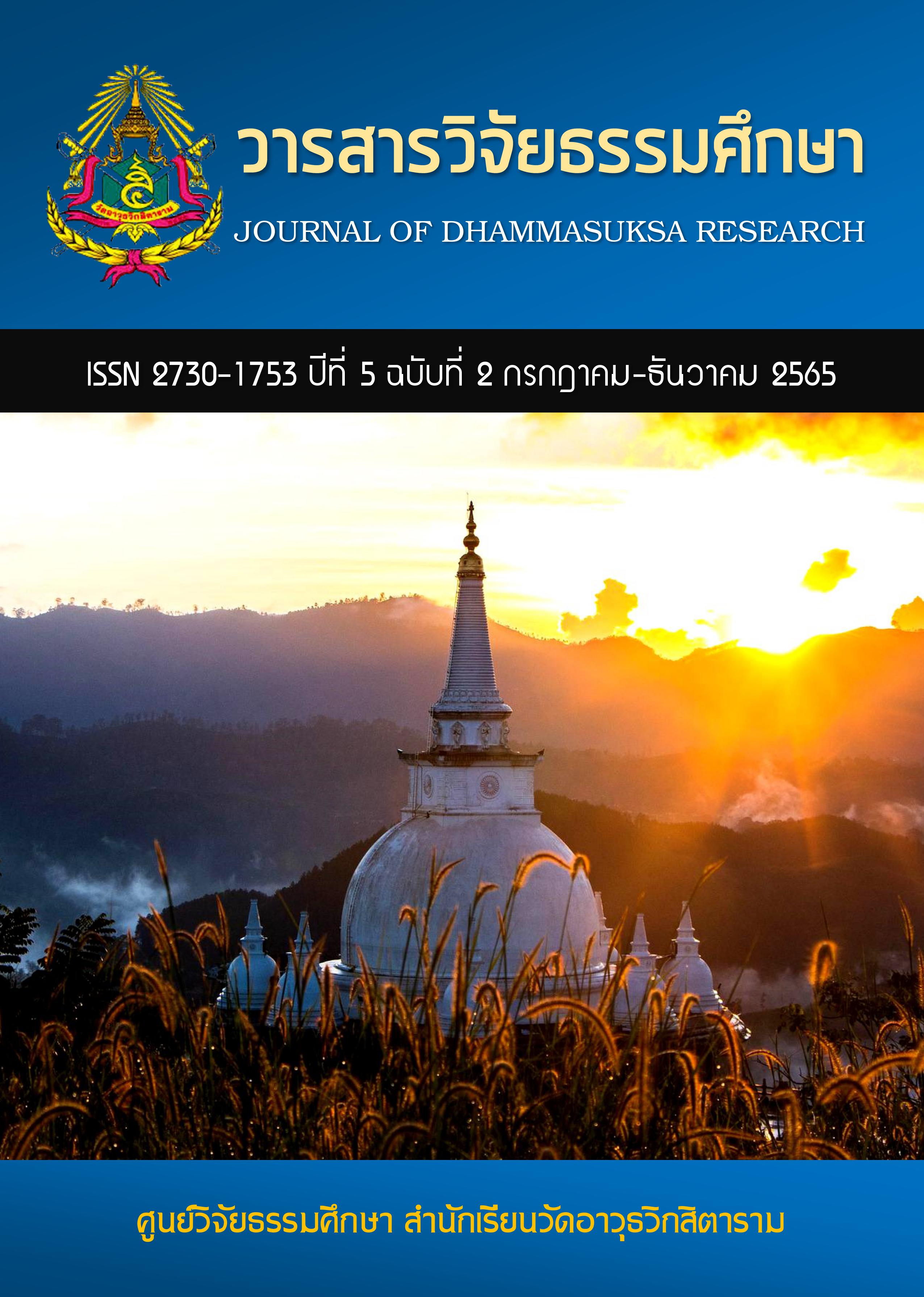A study of wisdom in the Production of Hemp Fibers of Community Textile Industry
Keywords:
Hmong Wisdom, Hemp Fiber Production Community Textile Industry, the time condition dimensionAbstract
Subject Research “Hmong Wisdom of Hemp Fiber Production Study of Community Textile Industry” Its objectives consist of 1) To study the wisdom of the Hmong ethnic group in the production of hemp fibers 2) to study the current condition and problems in the production of hemp fiber and 3) to develop the production of hemp fiber to the community industry. The results of the research revealed that the wisdom of the Hmong ethnic group there is wisdom and the production of hemp fibers. Through the rituals involved in the cultivation of hemp based on wisdom and cultural capital come a long way. Inherited as a cultural heritage of generations. Such as the planting process, until now, the most popular species that are planted are RPF1, RPF2 suitable for making fibers The RPF3, RPF4 cultivars are suitable for seed use in various industries. Local wisdom and the problem of harvesting and post-harvesting hemp plants also related to the way of life of the Hmong ethnic group. Development model of hemp fiber production to community industry. Based on local wisdom, cultural capital and sufficiency economy philosophy, which is model one adding value by taking advantage. The second model is the sustainable development paradigm model. The third model is based on the 13th National Economic and Social Development Plan under the concept of Transformation to Hi-Value and Sustainable Thailand Create a process to strengthen the research and development process of innovation Aiming to expand the success of the Royal Project to communities in the country's highlands and the fourth model is the community enterprise development paradigm in Hmong ethnic textiles with the time condition dimension.
References
กองควบคุมวัตถุเสพติด. (2561). คู่มือพนักงานเจ้าหน้าที่ในการกำกับดูแลซึ่งยาเสพติดให้โทษประเภท 5 เฉพาะเฮมพ์ (Hemp). กรุงเทพฯ: โรงพิมพ์สำนักงานพระพุทธศาสนาแห่งชาติ.
กรมส่งเสริมวัฒนธรรม. (2561). แกนกลางเศรษฐกิสร้างสรรค์ ทุนทางวัฒนธรรมคืออะไร. วารสารวัฒนธรรม. ปีที่ 57 ฉบับที่ 4 ตุลาคม-ธันวาคม 2561. [ออนไลน์]: http://magazine.culture.go.th/2018/4/ mobile/index.html#p=3., สืบค้น 29 เมษายน 2563.
จิราพร รอดคุ้ม, ทรงวุฒิ เอกวุฒิวงศา และอุดมศักดิ์ สาริบุตร. (2559). การศึกษาเอกลักษณ์ชาวเขาเผ่าม้ง อำเภอพบพระ จังหวัดตาก เพื่อการออกแบบเครื่องประดับ. วารสารวิชาการศิลปะสถาปัตยกรรมศาสตร์มหาวิทยาลัยนเรศวร ปีที่ 7 ฉบับที่ 1 มกราคม-มิถุนายน, 2559: 132-145.
ยุภา ประยงค์ทรัพย์. (2553). การบริหารจัดการวิสาหกิจชุมชนเพื่อพัฒนาเศรษฐกิจฐานราก กรณีประเทศไทยและสาธารณรัฐประชาธิปไตยประชาชนลาว. วิทยานิพนธ์ปริญญาดุษฎีบัณฑิต บัณฑิตวิทยาลัย: มหาวิทยาลัยราชภัฏสุรินทร์.
วิชชุพงษ์ แซ่หยาง. (2552). ศึกษาศึกษาความเป็นมาและความเชื่อที่ปรากฏในลายปักบนผืนผ้าของชาวเขาเผ่าม้งบ้านห้วยทรายเหนืออำเภอนครไทยจังหวัดพิษณุโลก. วิทยานิพนธ์ปริญญาศิลปศาสตรมหาบัณฑิต สาขาวิชาภาษาไทย บัณฑิตวิทยาลัย: มหาวิทยาลัยนเรศวร.
วิจิตรา ศรีสอน. (2553). บทบาทของประชาสังคมที่มีต่อการพัฒนาวิสาหกิจชุมชน. วิทยานนิพนธ์ศิลปศาสตรปรัชญาดุษฎีบัณฑิต บัณฑิตวิทยาลัย: มหาวิทยาลัยรามคำแหง.
สุภางค์ จันทวานิช. (2551). ทฤษฎีสังคมวิทยา. พิมพ์ครั้งที่ 1. กรุงเทพฯ: สำนักพิมพ์แห่งจุฬาลงกรณ์มหาวิทยาลัย.
สริตา ปนมณี และ รัตญา ยานะพันธุ (เรียบเรียง). (2561). คู่มือการผลิตเมล็ดพันธุ์เฮมพ์ภายใต้ระบบควบคุม. เชียงใหม่: วนิดาการพิมพ์.
ทรงคุณ จันทจร. (2563). การวิจัยคุณภาพทางวัฒนธรรม (ภาคปฏิบัติ). คณะมนุษยศาสตร์และสังคมศาสตร์ มหาวิทยาลัยราชภัฏมหาสารคาม. มหาสารคาม: ประสานการพิมพ์.
Downloads
Published
How to Cite
Issue
Section
Categories
License
Copyright (c) 2022 Journal of Dhammasuksa Research

This work is licensed under a Creative Commons Attribution-NonCommercial-NoDerivatives 4.0 International License.


